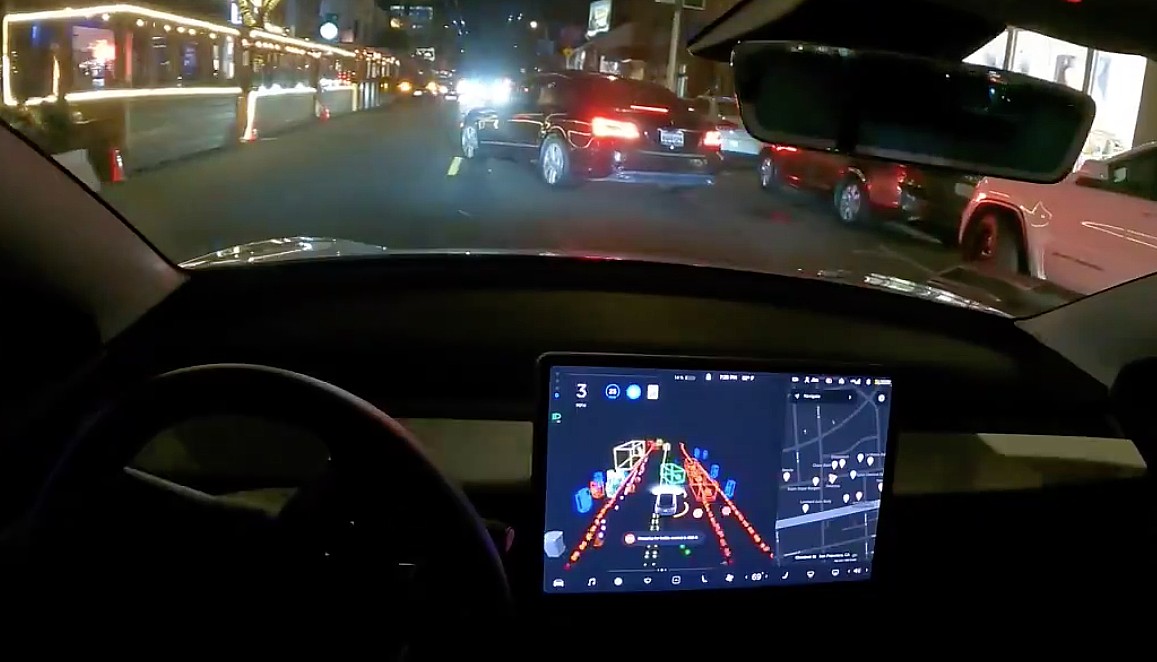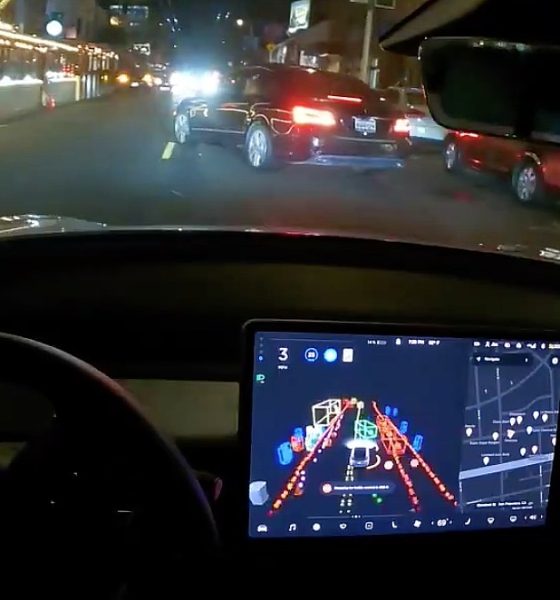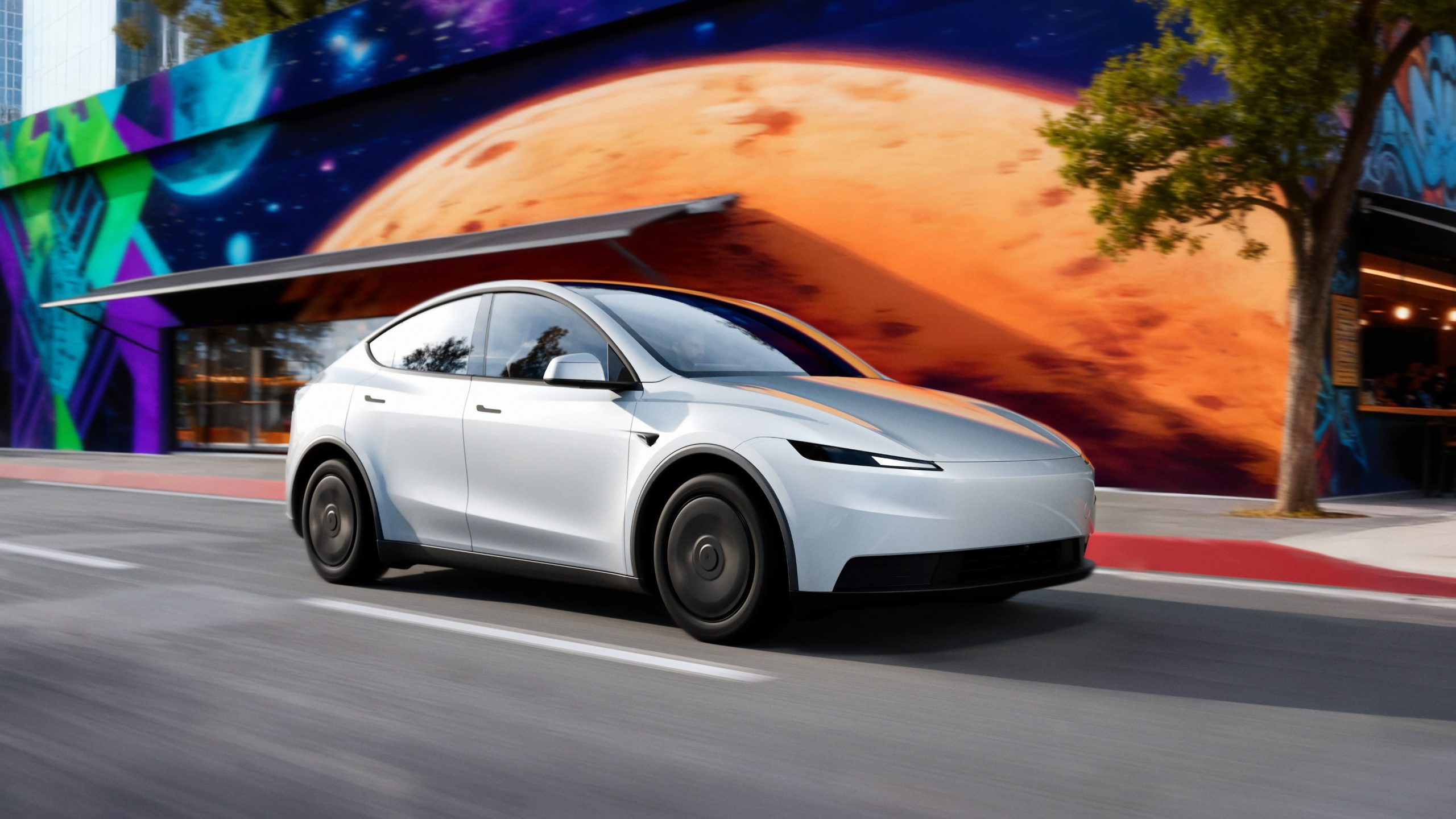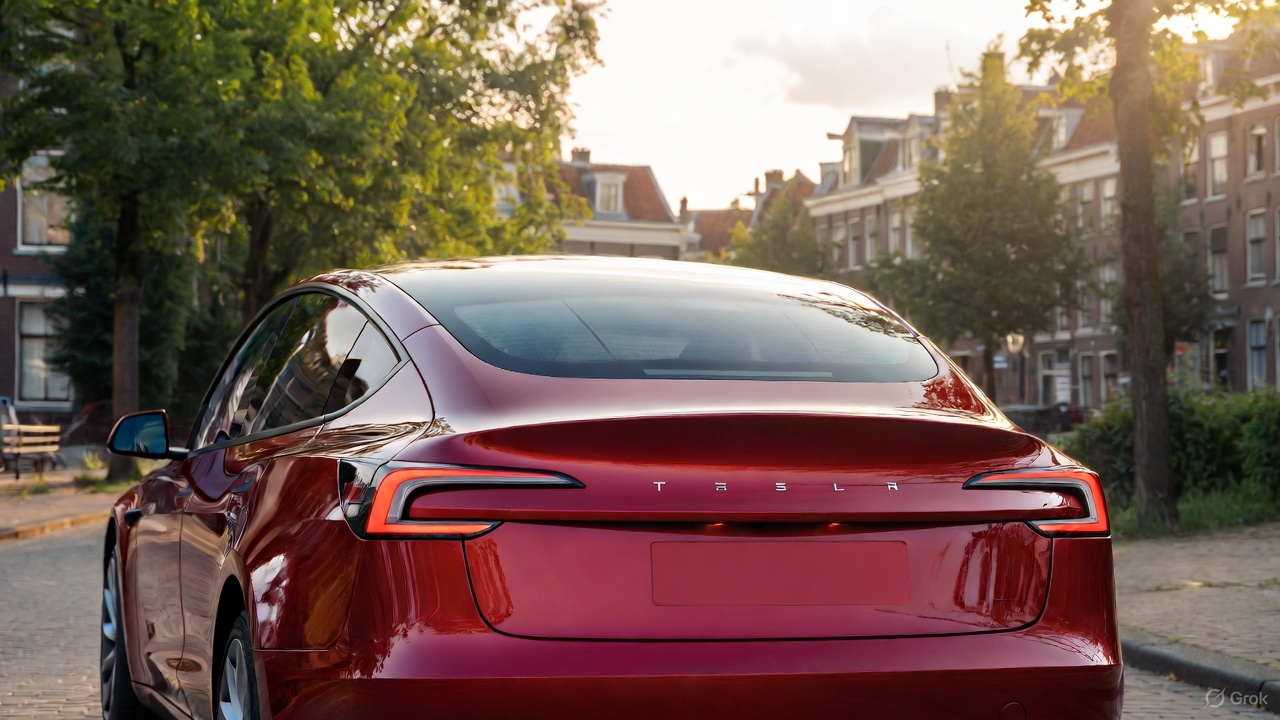

News
Tesla owners convey worries over radar loss for inclement weather
This is a preview from our weekly newsletter. Each week I go ‘Beyond the News’ and handcraft a special edition that includes my thoughts on the biggest stories, why it matters, and how it could impact the future.
Tesla’s recent decision to scrap Radar in favor of a Camera-based approach for Autopilot and Full Self-Driving aligned with the company’s plans and statements over the past few Earnings Calls. For CEO Elon Musk, the goal has been to get away from radar and depend on camera systems for Tesla’s self-driving plan, but some owners are not convinced of the decision. Over the past few days, I have received several emails and Tweets about the decision, with some owners still not completely confident in the vision-based approach Tesla will take.
During the Q1 2021 Earnings Call just a few months back, Elon Musk made it clear Tesla would be switching to a Camera-based system for AP and FSD. Comparing the cameras to human eyes, Musk’s explanation made a lot of sense.
Musk said:
“When your vision works, it works better than the best human because it’s like having eight cameras, it’s like having eyes in the back of your head, beside your head, and has three eyes of different focal distances looking forward. This is — and processing it at a speed that is superhuman. There’s no question in my mind that with a pure vision solution, we can make a car that is dramatically safer than the average person.”
Tesla Model 3, Model Y builds in May 2021 will no longer equip radar
Now, the thing is, eyes, while great for seeing things that are in the clear, are highly effective, and it makes a lot of sense to try and use this sort of approach for self-driving because it is how humans have driven for years. But when humans are confronted with low visibility and severe weather on the road, the confidence goes down, and many drivers adjust by traveling at lower speeds. Some even pull over and wait for the weather to subside, a move that is rare for many but some simply do not like driving in bad weather.
This is where radar comes in handy because it can identify and locate objects and how far they are away from the vehicle in the event of low visibility on the road, which is something that the human eyes, or cameras, simply cannot do.
An email from an Australian reader seemed to narrow in this point even further. A man named Peter emailed me and stated that his Model 3 recently identified a truck that was ahead of him but concealed in an opaque, white mist several car links ahead of his vehicle. “I assumed that visualization was created as a result of radar. In those conditions, the message multiple cameras blocked or obstructed appeared and the autopilot screamed and handed over,” Peter said.
Unless I’m in fog on I-5 and can’t see the massive collision ahead…. I’d like to understand the workaround to this. pic.twitter.com/sQXB63yWlv
— Rome Strach (@romn8tr) May 28, 2021
He then added, “On multiple other occasions I’ve noted on the visualization screen an unsighted vehicle obstructed by an SUV ahead of me.”
Without radar, the recognition of these vehicles would not be possible, so it brings some concerns to drivers who have utilized the radar system in vehicles to gain confidence in their surroundings.
Now, in a somewhat comical response to concerns, Musk posted a Reddit response from u/YukonBurger, which stated that they worked with radar a lot and were “very, very happy” with Tesla’s decision. It basically explained that trying to jive radar and cameras together is extremely difficult, and there are instances where using your eyes is just a better option because you can see how far you are away from things. Interestingly, the post does admit that “radar is really only good for reduced visibility situations where lane-keeping will probably also be degraded enough to not be worth it.” It concluded by stating that vision is still quick enough to avoid accidents or vehicles in front of the car in a short period of time, the real issue comes from cars behind you.
Not sure who wrote this, but it’s accurate pic.twitter.com/gRvWxOJZ56
— Elon Musk (@elonmusk) May 26, 2021
It seems that the real key to vision being a better approach comes down to the fact that, in clear conditions, it won’t have an issue identifying and removing itself from danger. Even in rainy conditions, where visibility isn’t necessarily bad, the vision approach is more advantageous than using radar.
The goal, ultimately, is to make the cars act as a human would, and humans don’t have radar. Instead, they compensate for reduced visibility with less dangerous driving. Slower speeds, more cautious navigation, and less frequent lane changes. Autopilot and FSD are already pretty timid and “shy” to begin with, it’s not like they’re out there driving like pissed-off teenagers.
I think that, while this move is somewhat worrisome for some drivers, the benefits outweigh the disadvantages. This has been a part of the plan for some time, and I think that now it is becoming a reality, some are starting to put the pieces together that there won’t be any radar so visibility limitations could end up being problematic. I wouldn’t worry, because I believe the cars will adjust just as humans do, they will simply be more cautious and more courteous on the roads in these settings.
A big thanks to our long-time supporters and new subscribers! Thank you.
I use this newsletter to share my thoughts on what is going on in the Tesla world. If you want to talk to me directly, you can email me or reach me on Twitter. I don’t bite, be sure to reach out!

Elon Musk
Tesla CEO Elon Musk sends rivals dire warning about Full Self-Driving

Tesla CEO Elon Musk revealed today on the social media platform X that legacy automakers, such as Ford, General Motors, and Stellantis, do not want to license the company’s Full Self-Driving suite, at least not without a long list of their own terms.
“I’ve tried to warn them and even offered to license Tesla FSD, but they don’t want it! Crazy,” Musk said on X. “When legacy auto does occasionally reach out, they tepidly discuss implementing FSD for a tiny program in 5 years with unworkable requirements for Tesla, so pointless.”
I’ve tried to warn them and even offered to license Tesla FSD, but they don’t want it! Crazy …
When legacy auto does occasionally reach out, they tepidly discuss implementing FSD for a tiny program in 5 years with unworkable requirements for Tesla, so pointless. 🤷♂️
🦕 🦕
— Elon Musk (@elonmusk) November 24, 2025
Musk made the remark in response to a note we wrote about earlier today from Melius Research, in which analyst Rob Wertheimer said, “Our point is not that Tesla is at risk, it’s that everybody else is,” in terms of autonomy and self-driving development.
Wertheimer believes there are hundreds of billions of dollars in value headed toward Tesla’s way because of its prowess with FSD.
A few years ago, Musk first remarked that Tesla was in early talks with one legacy automaker regarding licensing Full Self-Driving for its vehicles. Tesla never confirmed which company it was, but given Musk’s ongoing talks with Ford CEO Jim Farley at the time, it seemed the Detroit-based automaker was the likely suspect.
Tesla’s Elon Musk reiterates FSD licensing offer for other automakers
Ford has been perhaps the most aggressive legacy automaker in terms of its EV efforts, but it recently scaled back its electric offensive due to profitability issues and weak demand. It simply was not making enough vehicles, nor selling the volume needed to turn a profit.
Musk truly believes that many of the companies that turn their backs on FSD now will suffer in the future, especially considering the increased chance it could be a parallel to what has happened with EV efforts for many of these companies.
Unfortunately, they got started too late and are now playing catch-up with Tesla, XPeng, BYD, and the other dominating forces in EVs across the globe.
News
Tesla backtracks on strange Nav feature after numerous complaints

Tesla is backtracking on a strange adjustment it made to its in-car Navigation feature after numerous complaints from owners convinced the company to make a change.
Tesla’s in-car Navigation is catered to its vehicles, as it routes Supercharging stops and preps your vehicle for charging with preconditioning. It is also very intuitive, and features other things like weather radar and a detailed map outlining points of interest.
However, a recent change to the Navigation by Tesla did not go unnoticed, and owners were really upset about it.
For trips that required multiple Supercharger stops, Tesla decided to implement a naming change, which did not show the city or state of each charging stop. Instead, it just showed the business where the Supercharger was located, giving many owners an unwelcome surprise.
However, Tesla’s Director of Supercharging, Max de Zegher, admitted the update was a “big mistake on our end,” and made a change that rolled out within 24 hours:
The naming change should have happened at once, instead of in 2 sequential steps. That was a big miss on our end. We do listen to the community and we do course-correct fast. The accelerated fix rolled out last night. The Tesla App is updated and most in-car touchscreens should…
— Max (@MdeZegher) November 20, 2025
The lack of a name for the city where a Supercharging stop would be made caused some confusion for owners in the short term. Some drivers argued that it was more difficult to make stops at some familiar locations that were special to them. Others were not too keen on not knowing where they were going to be along their trip.
Tesla was quick to scramble to resolve this issue, and it did a great job of rolling it out in an expedited manner, as de Zegher said that most in-car touch screens would notice the fix within one day of the change being rolled out.
Additionally, there will be even more improvements in December, as Tesla plans to show the common name/amenity below the site name as well, which will give people a better idea of what to expect when they arrive at a Supercharger.
News
Dutch regulator RDW confirms Tesla FSD February 2026 target
The regulator emphasized that safety, not public pressure, will decide whether FSD receives authorization for use in Europe.

The Dutch vehicle authority RDW responded to Tesla’s recent updates about its efforts to bring Full Self-Driving (Supervised) in Europe, confirming that February 2026 remains the target month for Tesla to demonstrate regulatory compliance.
While acknowledging the tentative schedule with Tesla, the regulator emphasized that safety, not public pressure, will decide whether FSD receives authorization for use in Europe.
RDW confirms 2026 target, warns Feb 2026 timeline is not guaranteed
In its response, which was posted on its official website, the RDW clarified that it does not disclose details about ongoing manufacturer applications due to competitive sensitivity. However, the agency confirmed that both parties have agreed on a February 2026 window during which Tesla is expected to show that FSD (Supervised) can meet required safety and compliance standards. Whether Tesla can satisfy those conditions within the timeline “remains to be seen,” RDW added.
RDW also directly addressed Tesla’s social media request encouraging drivers to contact the regulator to express support. While thanking those who already reached out, RDW asked the public to stop contacting them, noting these messages burden customer-service resources and have no influence on the approval process.
“In the message on X, Tesla calls on Tesla drivers to thank the RDW and to express their enthusiasm about this planning to us by contacting us. We thank everyone who has already done so, and would like to ask everyone not to contact us about this. It takes up unnecessary time for our customer service. Moreover, this will have no influence on whether or not the planning is met,” the RDW wrote.
The RDW shares insights on EU approval requirements
The RDW further outlined how new technology enters the European market when no existing legislation directly covers it. Under EU Regulation 2018/858, a manufacturer may seek an exemption for unregulated features such as advanced driver assistance systems. The process requires a Member State, in this case the Netherlands, to submit a formal request to the European Commission on the manufacturer’s behalf.
Approval then moves to a committee vote. A majority in favor would grant EU-wide authorization, allowing the technology across all Member States. If the vote fails, the exemption is valid only within the Netherlands, and individual countries must decide whether to accept it independently.
Before any exemption request can be filed, Tesla must complete a comprehensive type-approval process with the RDW, including controlled on-road testing. Provided that FSD Supervised passes these regulatory evaluations, the exemption could be submitted for broader EU consideration.








